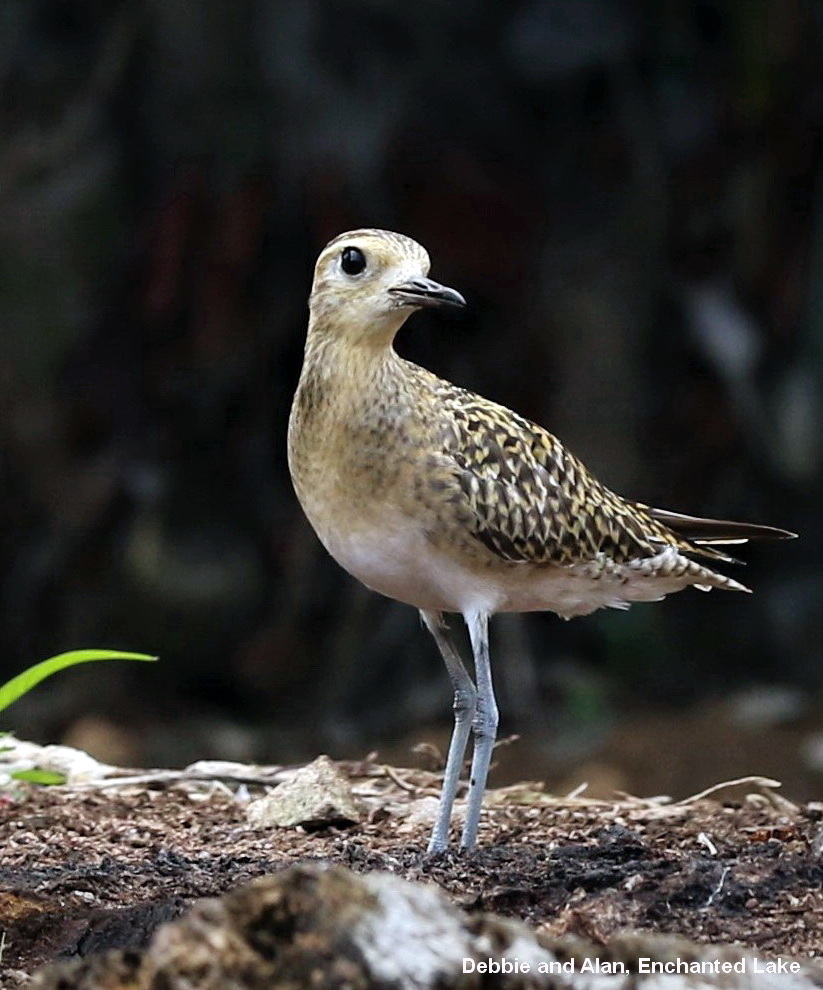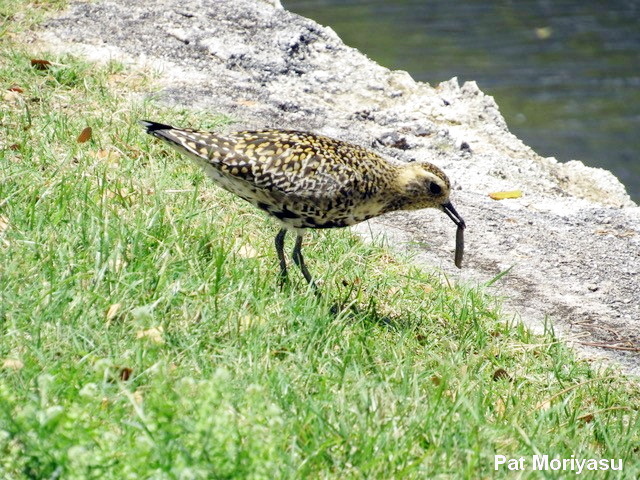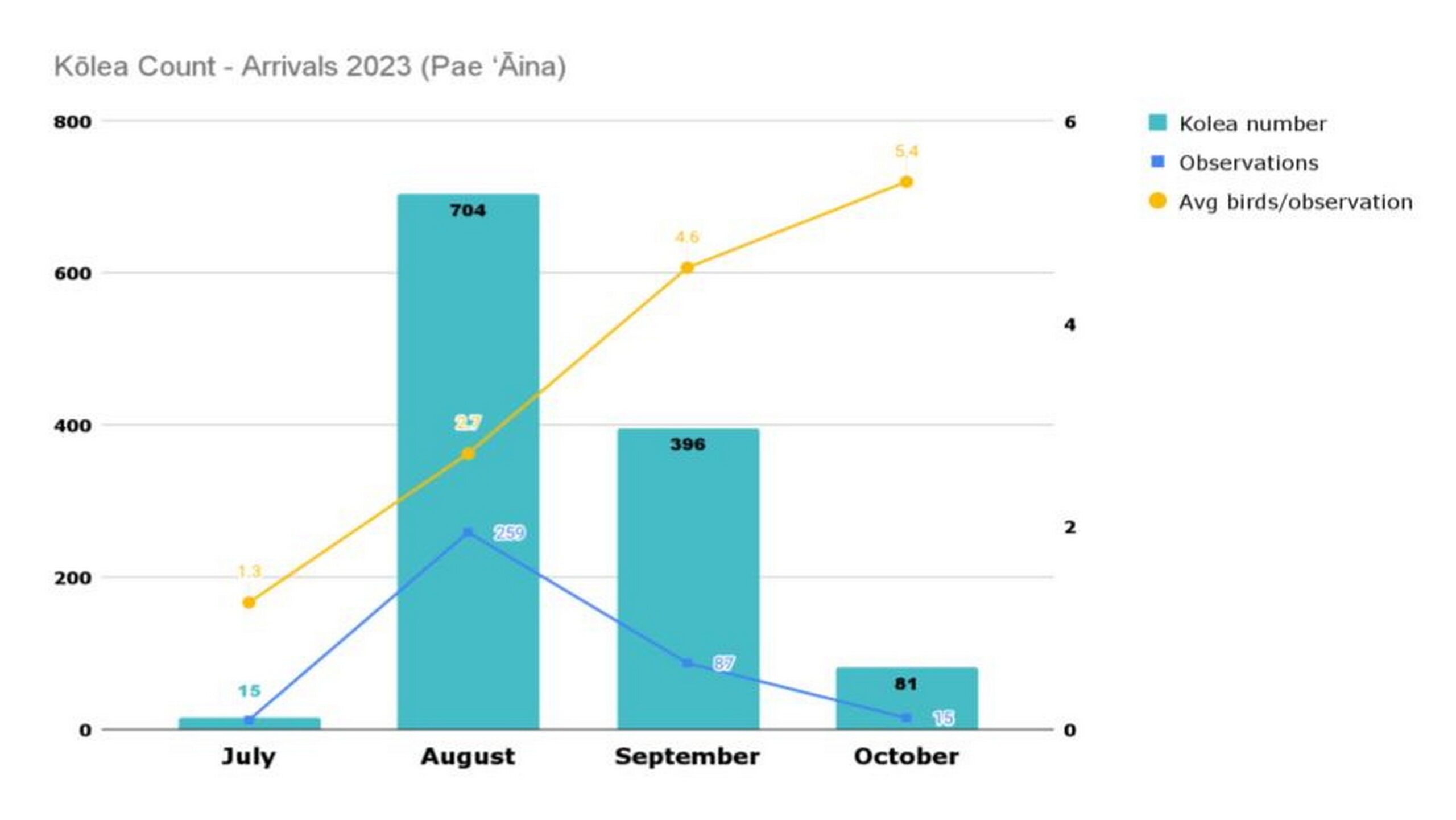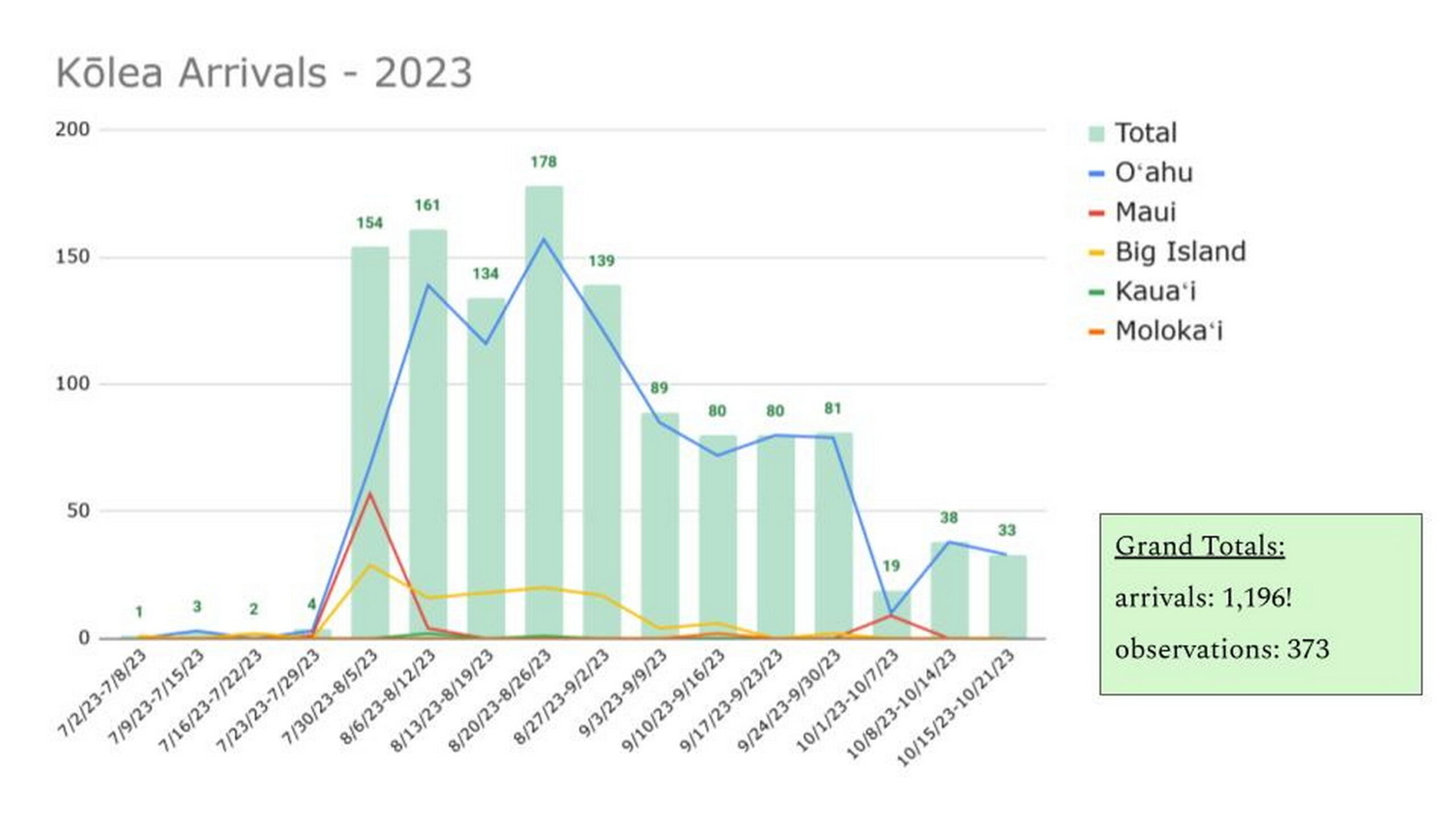
November 12, 2023
Thank you for joining the Hawaii Audubon Society’s annual statewide Kōlea Count. From December 1st through March 31st, we ask Hawaii’s participants of Big Counts to count kōlea in a park, cemetery, golf course, or other area claimed by kōlea as winter feeding sites. Little Counts are a way to note the arrival, departure, and behavior of a single bird that spends the winter in your backyard, street corner, or school grounds.

Once a plover survives its first year in Hawaiʻi, the bird returns to that precise place year after year. Foraging patches range in size from about one acre to a football field, depending on the abundance of crawly things in the patch. Kolea eat anything they can catch and swallow, including slugs (above), cockroaches, centipedes, and spiders. ©Pat Moriyasu
Choose a site from this list and email your choice to me, Susan Scott, here. If your area isn’t listed, tell me and I’ll add it. Please count, and report separately, your place at least three times throughout the season to account for birds that might have been startled into flight.

When a disturbance passes, a plover returns to its chosen patch, such as this bird at popular Ko Olina Lagoon 3, January 2023. ©Susan Scott
In recording our observations, we kōlea fans gather facts that help researchers learn more about the birds, and in that, help them thrive and survive. For instance, when people have noticed kōlea in late July and early August, a common question is: “Isn’t this early for the birds’ return?”
No. This summer and fall, observers reported more birds arriving in August than September. When I shared this fact to longtime plover fan and counter, Sigrid Southworth, she said, “And all these years, we said they arrived in September.”
A big mahalo to plover lovers for taking the time to report arrival dates, and to shorebird researcher Claire Atkins of UHM for compiling results in the below graphs. Also, thanks for sending pictures. If you have photos to share, please email me and I’ll send a link.

